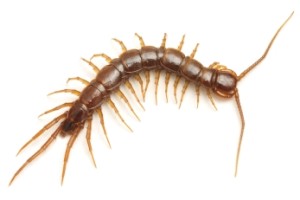
Flat, elongated and segmented bodies with anywhere from 15 to 177 pairs of legs
ColorRange of browns and reddish-oranges
SizeDepending on the species, they can range from 4 to 152 millimeters in length
HabitatSecluded, damp and dark places are preferred
Interesting FactsCentipedes are venomous and carnivorous